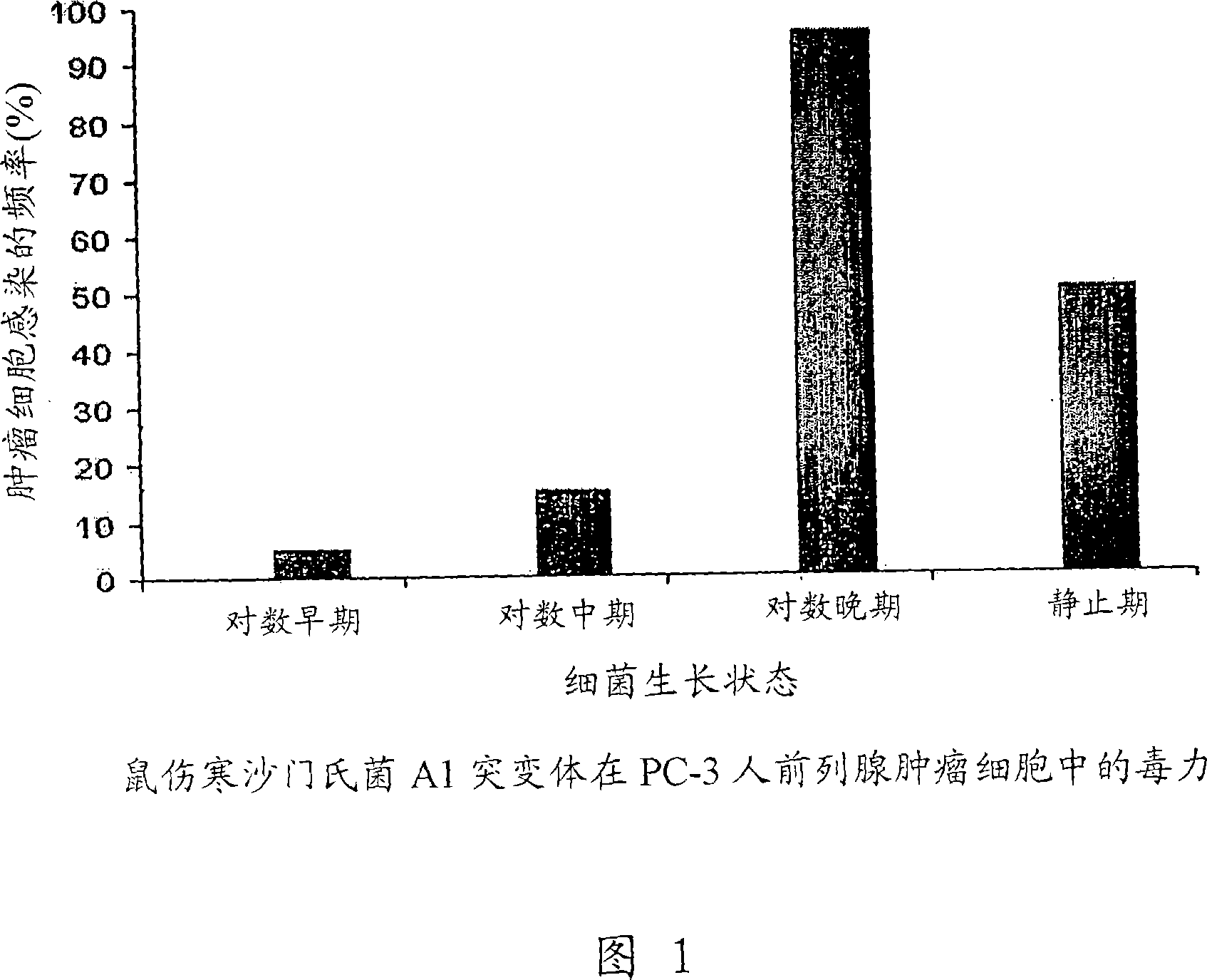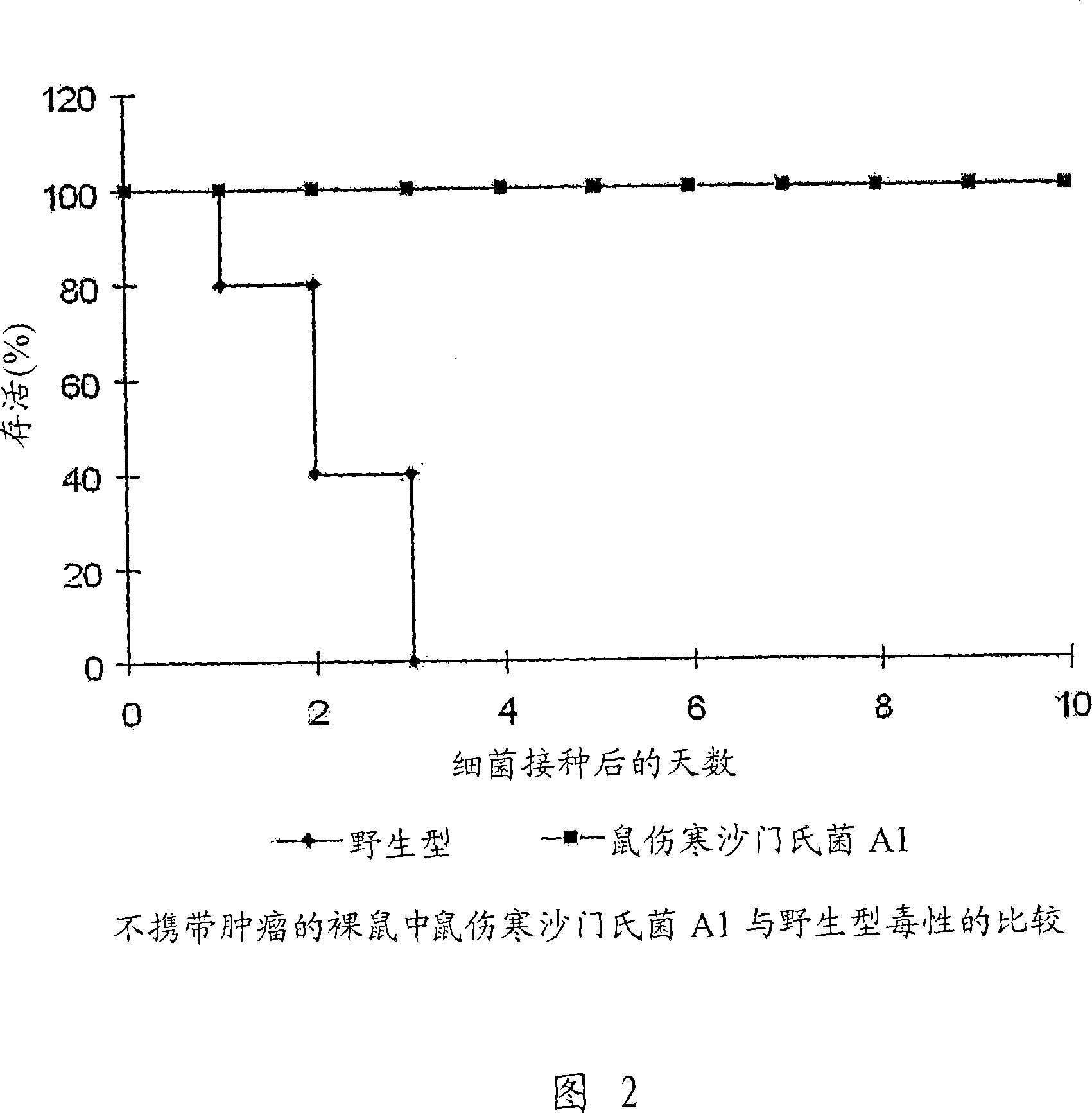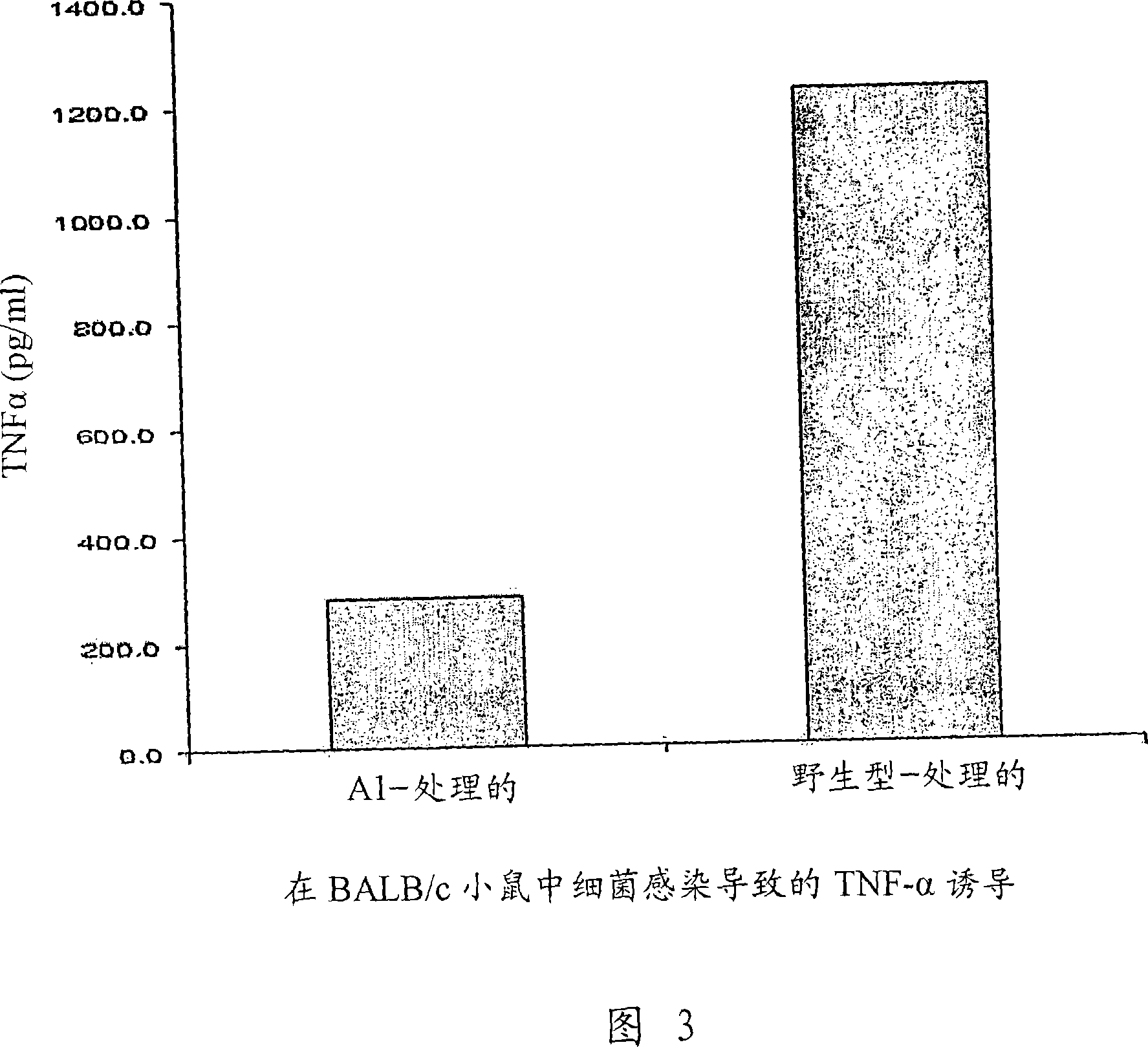Cancer selective auxotrophs
A nutrient deficiency and model technology, applied in allergic diseases, antibody medical ingredients, medical raw materials derived from bacteria, etc., can solve problems such as the nature of mutations that are not described
- Summary
- Abstract
- Description
- Claims
- Application Information
AI Technical Summary
Problems solved by technology
Method used
Image
Examples
Embodiment 1
[0058] Preparation of Salmonella typhimurium A1
[0059] A single clone of Salmonella typhimurium (ATCC 14028) (Stratagene, San Diego CA) was picked from the LB agar plate, cultured in 5 ml of liquid LB medium, and shaken at 37° C. at 300 rpm overnight. The overnight culture was diluted 1:10 with LB medium and incubated at 37°C. For each time point, the cultured bacteria were at OD 600 down to measure.
[0060] At mid-log phase, cells were harvested at 4°C, washed three times with ice-cold glycerol (10% V / V), and then resuspended in approximately 1 / 100 of the original culture volume in ice-cold glycerol (10% V / V). 40 μl of 2.0 x 10 8 Cells were mixed with 2 μl of pGFP (Clontech) vector, kept on ice for 5 minutes, and then electroporated with a Gene Pulser device (BioRad Labs) according to the manufacturer's instructions: electroporation was performed at a setting of 1.8 kv with a pulse controller, 1000 Ω parallel resistor. Immediately after the electric pulse, 1 ml of SOC ...
Embodiment 2
[0071] In vitro bacterial invasion and intracellular replication of tumor cell lines
[0072] Tumor cells were grown in 24-well tissue culture plates to a density of approximately 10 4 cells / well. Bacteria were grown to mid-log, late-log and stationary phase (OD 600= 0.3, 0.6, 1.2, 2.0). Bacteria were diluted in cell culture medium and added to tumor cells (1 × 10 5 / ml), and then placed in a 37°C incubator. After 1 hour, cells were washed and then cultured in medium containing gentamicin sulfate (20 μg / ml) to kill external, but not internal, bacteria. Intracellular bacteria were monitored at different time points under a fluorescence microscope.
[0073] Salmonella typhimurium-GFP virulence in tumor cells is affected by the growth state of the bacteria: bacteria in mid-log phase are minimally virulent, resuming their invasiveness in late-log and stationary phase. Bacteria in late logarithmic phase had the greatest virulence to kill PC-3 tumor cells. These 24 hour pos...
Embodiment 3
[0077] Preparation of in vivo tumor models
[0078] Tumors were labeled with RFP by retroviral transduction, PT67, a packaging cell line derived from NIH3T3, expressing the 10A1 viral envelope, purchased from CLONTECH Laboratories Inc. PT67 cells were cultured in DME (Irvne Scientific, Santa Ana, CA) supplemented with 10% heat-inactivated fetal bovine serum (FBS) (Gemini Bio-products Calabasas, CA). For vector production, 70% confluent packaging cells (PT67) use DOTAp TM Precipitated mixture of reagents (Boehringer Mannheim) and saturation pLNCX 2 - DsRed-2-RFP plasmid was incubated for 18 hours. Host pLNCX purchased from CLONTECH Laboratories Inc (Palo Alto, CA) 2 The vector contains a neomycin resistance gene for antibiotic selection in eukaryotic cells. The RFP gene (DsRed2, CLONTECH Laboratories Inc., Palo Alto, CA) was inserted into pLNCX 2 Eg1II and NotI sites of the vector. Fresh medium was supplemented, and cells were viewed with a fluorescent microscope 48 hou...
PUM
 Login to View More
Login to View More Abstract
Description
Claims
Application Information
 Login to View More
Login to View More - R&D
- Intellectual Property
- Life Sciences
- Materials
- Tech Scout
- Unparalleled Data Quality
- Higher Quality Content
- 60% Fewer Hallucinations
Browse by: Latest US Patents, China's latest patents, Technical Efficacy Thesaurus, Application Domain, Technology Topic, Popular Technical Reports.
© 2025 PatSnap. All rights reserved.Legal|Privacy policy|Modern Slavery Act Transparency Statement|Sitemap|About US| Contact US: help@patsnap.com



